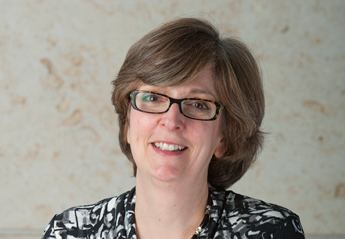Nationality American Fields Neuroscience, Genetics | Known for UNC5C, Harlequin mice | |
 | ||
Institutions | ||
Susan L. Ackerman is an American neuroscientist and geneticist. Her work has highlighted some of the genetic and biochemical factors that are involved in the development of the central nervous system and age-related neurodegeneration.
Contents
Education
Ackerman attended college at California State University, Chico, in Chico California. She got two Bachelor of Arts degrees while attending the school, one in Chemistry and the other in Biology. She then went on to attend the University of California, Los Angeles. She got her doctorate in Biology from UCLA. It is here that she obtained the knowledge that she uses to perform the research that she is known for.
Career and Research
Ackerman is an investigator at the Howard Hughes Medical Institute, and has been since 2005. Her work there has centered on the mice that are available through the Jackson Laboratory, known as the Jax mice. These mice have a wide array of genotypic mutations, which lead to different phenotypic expression. Ackerman observes these mice and study ones that have neurological defects, and then investigates the genotypic variations that lead to these defects. She then investigates the product of these genes, and how they effect neurological development and preservation.
Unc5c
The discovery that she is most known for revolves around the Unc5c gene. The gene product of Unc5c is the Unc5c protein, which is a neurological netrin receptor. Her research on Unc5c protein revealed that the protein is integral in the development of the corpus callosum, the neurons that form the connection between the two hemispheres of the brain. A mutation in the Unc5c gene, in association with other mutated genes, leads to a degeneration of the corpus callosum. However, if Unc5c is the only gene that is mutated, then there is not a noticeable difference in the corpus callosum. This is because the Unc5c receptor is only integral in the formation of the corpus callosum in early-born, deep layer neurons. These neurons comprise a small percentage of the corpus callosum relative to the late-born, upper layer neurons.
Harlequin mice
Her research has also dealt with genetic variations that lead to neurons being more susceptible to oxidative damage. This oxidative damage leads to apoptosis in many neurons. The research centers on the Harlequin mice, who have a proviral insertion in the apoptosis-inducing factor (AIF) gene. The AIF protein is, as the research shows, is a free radical scavenger, saving cells from and reducing oxidative damage. The proviral insertion into this gene causes an 80% reduction in expression, causing oxidative damage in neurons as they age.
Other research
Other projects Ackerman has been involved in include the mutation of a U2 snRNA and its connection to neurodegeneration, an editing defective tRNA synthetase that leads to protein misfolding and neurodegeneration, and ribosome stalling by tRNA mutations that leads to neurodegeneration.
Other Professions
Ackerman’s research is helping us understand what causes several types of neurodegeneration in mammals, which will hopefully lead to cures for neurodegenerative diseases. Research, however, is not the only way that Ackerman is contributing to the science community. She is also a professor at the Jackson Laboratory, as well as in the Sackler School of Graduate Biomedical Sciences at Tufts University. She is also an adjunct professor at the University of Maine, Orono. On top of teaching, Ackerman is an associate geneticist at Massachusetts General Hospital in Boston, Massachusetts.
